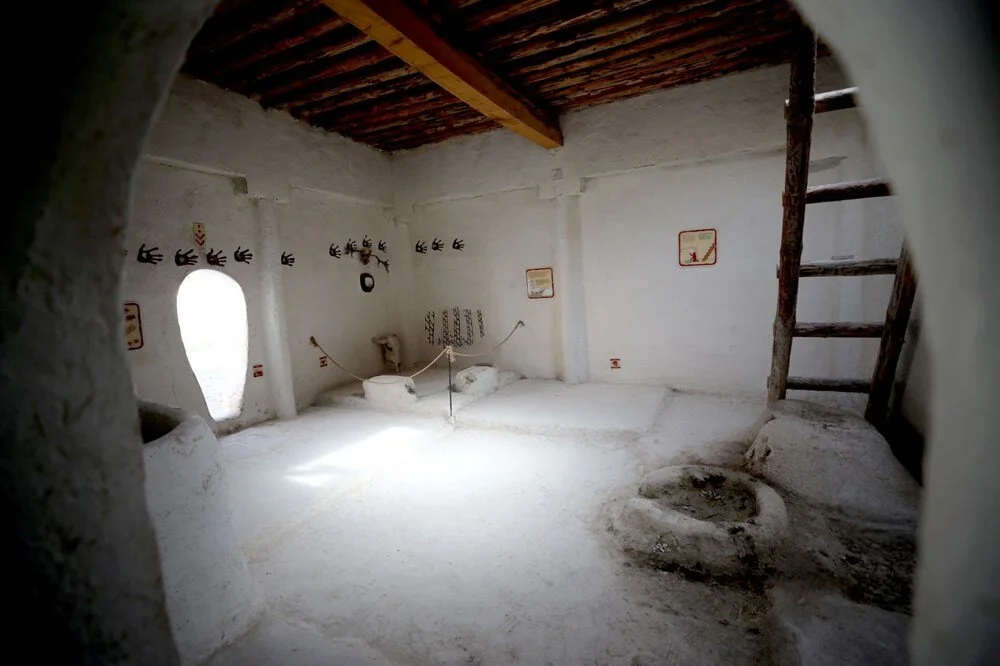
Archaeologists discover 8,600-year-old world’s oldest bread at Çatalhöyük
Excavations at Çatalhöyük, one of the first urbanization sites of the Neolithic period, unearthed 8,600-year-old “bread”.
Archaeologists say the bread may be the oldest known bread in the world.
Çatalhöyük is located in the Çumra district of Konya province in central Turkey.
In Çatalhöyük, people lived in adjoining mud-brick houses with roof entrances and established social bonds.

An oven structure was unearthed in the area called “Mekan 66” in Çatalhöyük.
Wheat, barley, pea seeds and a palm-sized artifact that could be food were found around the largely destroyed oven.

“According to the analysis conducted at Necmettin Erbakan University Science and Technology Research and Application Center (BİTAM), the spongy residue is a fermented bread dating back to 6600 BC,” said Anadolu University Faculty Member Assoc. Prof. Dr. Ali Umut Türkcan, Head of the Excavation Committee.

Stating that the small and round spongy find in the corner of the oven, which we discovered in 2021, was found to be bread with careful documentation, Türkcan said: “The small, round spongy find in the corner of the oven was, after careful documentation, recognised as bread. The fact that the structure was covered with a thin clay allowed the bread to be preserved until today. Radio carbon tests conducted at the TUBITAK Marmara Research Centre (MAM) showed that our sample can be dated back to approximately 6,600 BC.”
The oldest bread in the world
Türkcan explained that the first examples of fermented bread were found in Egypt and used the following expressions:

“We can say that this find in Çatalhöyük is the oldest bread in the world. Considering the observation, analyses and dating of this organic residue, we can say that this bread is approximately 8,600 years old. It is a reduced version of a loaf of bread. It has a finger pressed in the centre, it has not been baked, but it has been fermented and has survived to the present day together with the starches inside. There is no such example until today. Çatalhöyük was already the centre of many firsts. The world’s first weavings were in Çatalhöyük during the years it was excavated. Wooden artefacts were also in Çatalhöyük. Wall paints and paintings were added to this. Konya and Turkey are very lucky in this sense.”

Salih Kavak, a lecturer at Gaziantep University who participated in the analysis of the bread, said, “I was very surprised when they brought it. Because in this form, I thought, ‘Could it be dough, bread, organic residue?’ I made a morphological diagnosis with the naked eye, then immediately looked at the content under a microscope. The most exciting thing is that there are cereal residues. The fact that there were ground and broken pieces of plants such as barley, wheat and peas strengthened the possibility of what we immediately thought at first, ‘Is this bread?
You may also like
- A 1700-year-old statue of Pan unearthed during the excavations at Polyeuktos in İstanbul
- The granary was found in the ancient city of Sebaste, founded by the first Roman emperor Augustus
- Donalar Kale Kapı Rock Tomb or Donalar Rock Tomb
- Theater emerges as works continue in ancient city of Perinthos
- Urartian King Argishti’s bronze shield revealed the name of an unknown country
- The religious center of Lycia, the ancient city of Letoon
- Who were the Luwians?
- A new study brings a fresh perspective on the Anatolian origin of the Indo-European languages
- Perhaps the oldest thermal treatment center in the world, which has been in continuous use for 2000 years -Basilica Therma Roman Bath or King’s Daughter-
- The largest synagogue of the ancient world, located in the ancient city of Sardis, is being restored











Leave a Reply